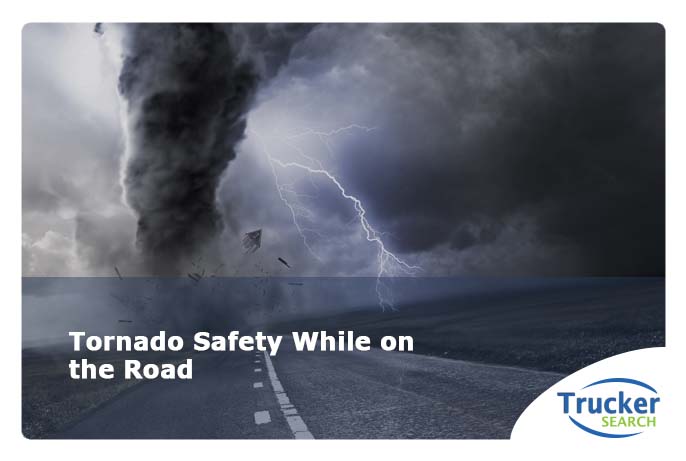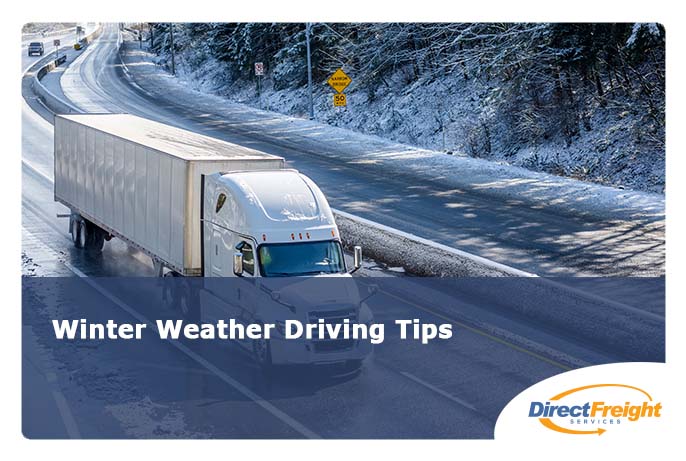TO-MAY-TO, TO-MAH-TO, tornado! The word for tornado likely comes from two Spanish words, one meaning ‘to thunder’ and the other ‘to turn.’ That seems like an accurate description for the whirling storm clouds. Tornadoes are quite common in the Central United States. There is even a specific season and an aptly named high tornado risk zone known as Tornado Alley that stretches from Southern Nebraska to Northern Texas. As a cross country or regional driver in the central US, you will likely face a tornado situation in your career as a driver. So, how do you stay safe during tornado weather?
Tornado Warning!
The first thing you should always be on the lookout for is the weather forecast when you’re driving. While meteorologists cannot always predict a tornado, they know the conditions that can create one and can give advance warning of where one may form. In addition to this, watching the sky while you drive especially when there seems to be a sudden darkening, or the winds are changing rather rapidly will help you determine whether a tornado is starting to form and how far away you are from it. Seeing a tornado near your truck is likely one of the scariest things you will ever face as a driver, but there are ways to increase your chances of survival and possibly even save your truck.
What Should You Do?
The priority in a tornado situation is saving yourself- if you are faced with a tornado, Trucks can be repaired and goods can be replaced, but you’ve only got one life. There are two courses of action when it comes to addressing a tornadic situation. These depend on whether you are inside your truck or outside of it (at a truck stop, delivery point, pick-up location, fueling up, etc.).
If you are driving, the best thing to do is look for a place below ground level to pull your truck into. DO NOT pull under a bridge or overpass as the winds flowing through these areas are more treacherous than the ones in the open. The best place to take your truck is into a culvert or into a ditch. Make sure that your truck is not near any structures or trees, as these may collapse and fall on your vehicle. After your truck is parked, remain in the driver’s seat, buckle your seatbelt, and cover your head with your arms and a jacket or blanket to aid in protecting you from debris or broken glass. If you cannot get your truck into a low place, get yourself into a ditch or culvert far from structures or vehicles, and cover your neck and head with your arms and a jacket or blanket.
If you are stopped, try to get to the nearest building and shelter in the innermost room. If this is not possible and you have enough time, drive your truck into a low place. If you can’t get into a building or don’t have time to drive, run to the nearest ditch and cover your head and neck with your arms and a jacket or blanket.
If you are driving and cannot find a low place, DO NOT keep driving towards the tornado. Turn away from it and locate the nearest possible low place that is far from structures.
Staying Safe
Tornadoes are usually sudden, but it is possible to stay safe. Following the above guidelines gives you the best chance at surviving the storm. If you know that you are traveling through tornado country at peak tornado season (May-June), it is a good idea to pack a kit of supplies. This kit should include extra food, water, a flashlight, and a battery powered radio. As you are driving, check the weather on the radio, and take shelter when warnings are announced. Hopefully you will never face a tornado, but it always pays to be alert and prepared during any severe weather condition. Stay safe out there!


